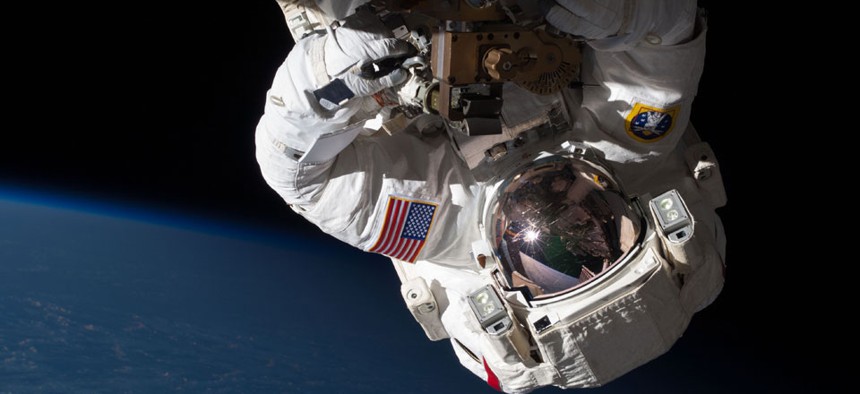Five Things That Cost More Than Space Exploration

NASA
Does the U.S. spend too much on space exploration, or not enough?
Does the US spend too much on space exploration, or not enough? The percentage of US federal spending dedicated to NASA has dropped fairly consistently since the early 1990s—from 1.05% in 1991 to 0.48% in 2012—and that’s a far cry from the 4.41% it commanded in 1966. NASA estimates that for the $18 billion or so it costs to run, the “space economy” produces $180 billion in jobs, commercial goods and services. Whether or not that 10x return on investment is accurate, space programs still look like a bargain compared to other industries. These cost comparisons are the subject of a new Tumblr blog, and here are our favorites:
1. The US spends more on plastic surgery in a year than the total cost of the Hubble Telescope’s replacement
In recent years, the US has spent an average of around $14 billion on cosmetic surgery. Meanwhile, the James Webb Space Telescope—which is slated to be NASA’s number one window into the universe, unseating the Hubble—has been eating upthe rest of the program’s budget. But when all is said and done, the projected cost is only $8.8 billion.
Why do we need a new space telescope? The Hubble caused a massive leap in our understanding of the cosmos, but we’re pushing its limits. The James Webb’s primary mirror will be almost three times the size of the Hubble’s, widening our scope.
2. India spent more on firecrackers than on a satellite orbiting Mars
It’s not just the US that explores space, after all. In 2013, India launched its first Mars orbiter—a satellite to observe the planet without landing on the surface. And the Indian Space Research Organization made the mission happen for only $75 million, a figure the country can be proud of. After all, each year the country spends over 10 times that on firecrackers. That adds up to $800 million, which is mostly spent around the festival of Diwali.
3. Developing a rocket costs less than getting a close shave
Gillette spent $750 million on research and development for its 1998 three-bladed razor, the Mach 3, which has since been followed by four- and five-blade iterations. SpaceX reportedly spent $299.9 million on the Falcon 9 rocket in 2010 (pdf). The Falcon 9, which couples with a cargo carrier called the Dragon, has already been used for the first commercial rendezvous with the International Space Station. Soon, SpaceX says, it will be used to carry astronauts to the station as well. The Mach 3 razor, to its credit, continues to shave a bit more closely than a two blade, but with slightly less precision than a four blade.
4. Sochi could have sent 721 people into space
Right now, the only way to get to the International Space Station is to take the Russian Soyuz launch vehicles. NASA has to pay for the privilege of hitching a ride—$424 million for six seats to be used through 2017. Unfortunately, that fee won’t even put a dent in Russia’s Olympic costs: $51 billion, the most ever spent on the games. So to cover the costs of the Olympics, Russia would need to send 721 astronauts into space at the price it charges NASA. That’s significantly more peoplethan have left the planet, ever.
5. Baseball player Alex Rodriguez could have flown to space on one year’s salary
The Yankees third baseman, known as A-Rod, made $21 million in 2001 (back then, he’d just signed with the Texas Rangers and hadn’t yet been busted for using performance enhancers). That same year, Dennis Tito became the first ever “space tourist,” paying a rumored $20 million for the privilege. And this year, the market has advanced; you may just be able to buy a sub-orbital flight with Virgin Galactic for only $250,000. Even with A-Rod’s drug scandal and subsequent suspension and salary cuts, the $3 million he’s owed for the year will more than cover a few trips into space—just not to the space station.
Reprinted with permission from Quartz. The original story can be found here.
NEXT STORY: How to Make Data-Based Hiring Decisions





